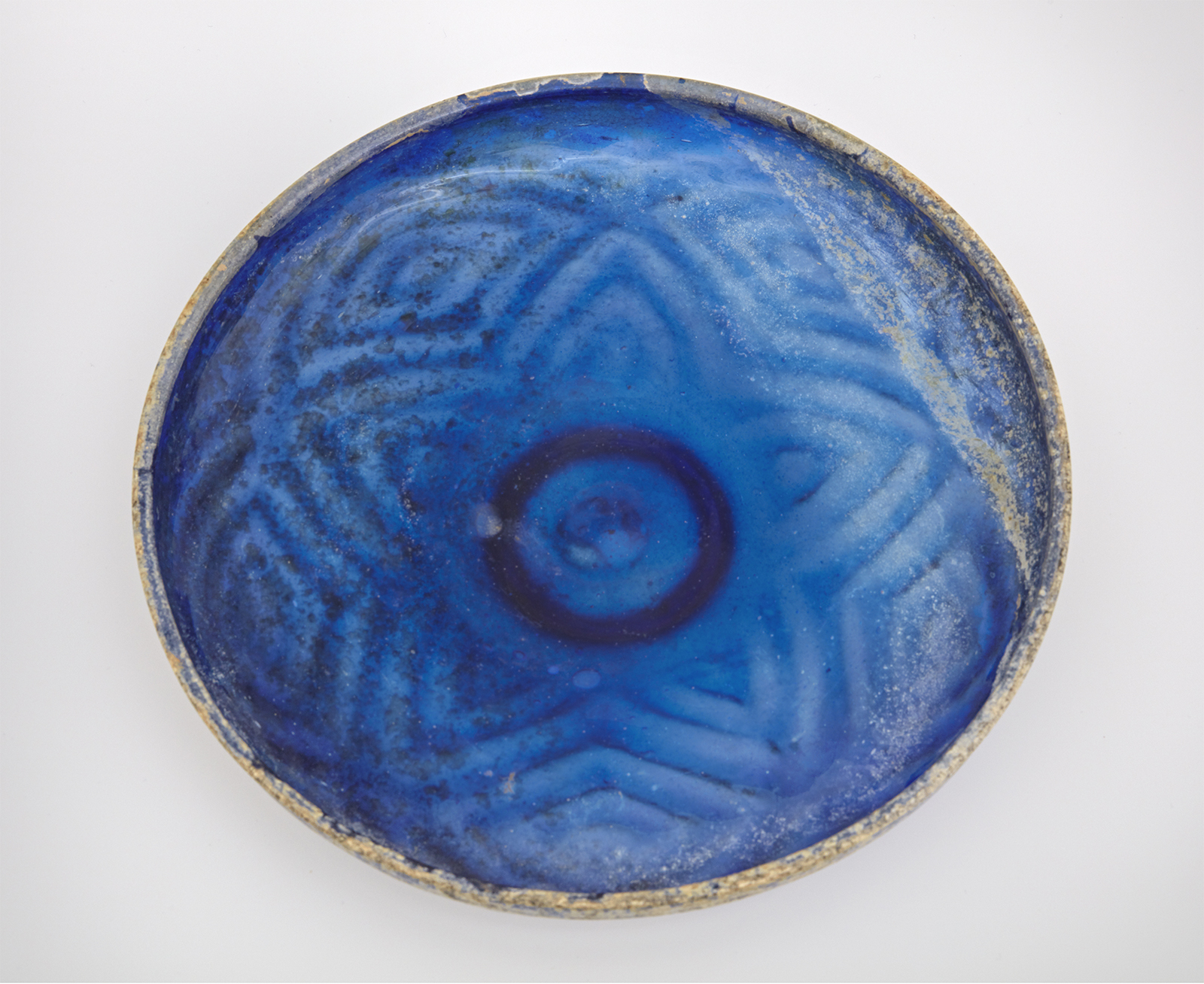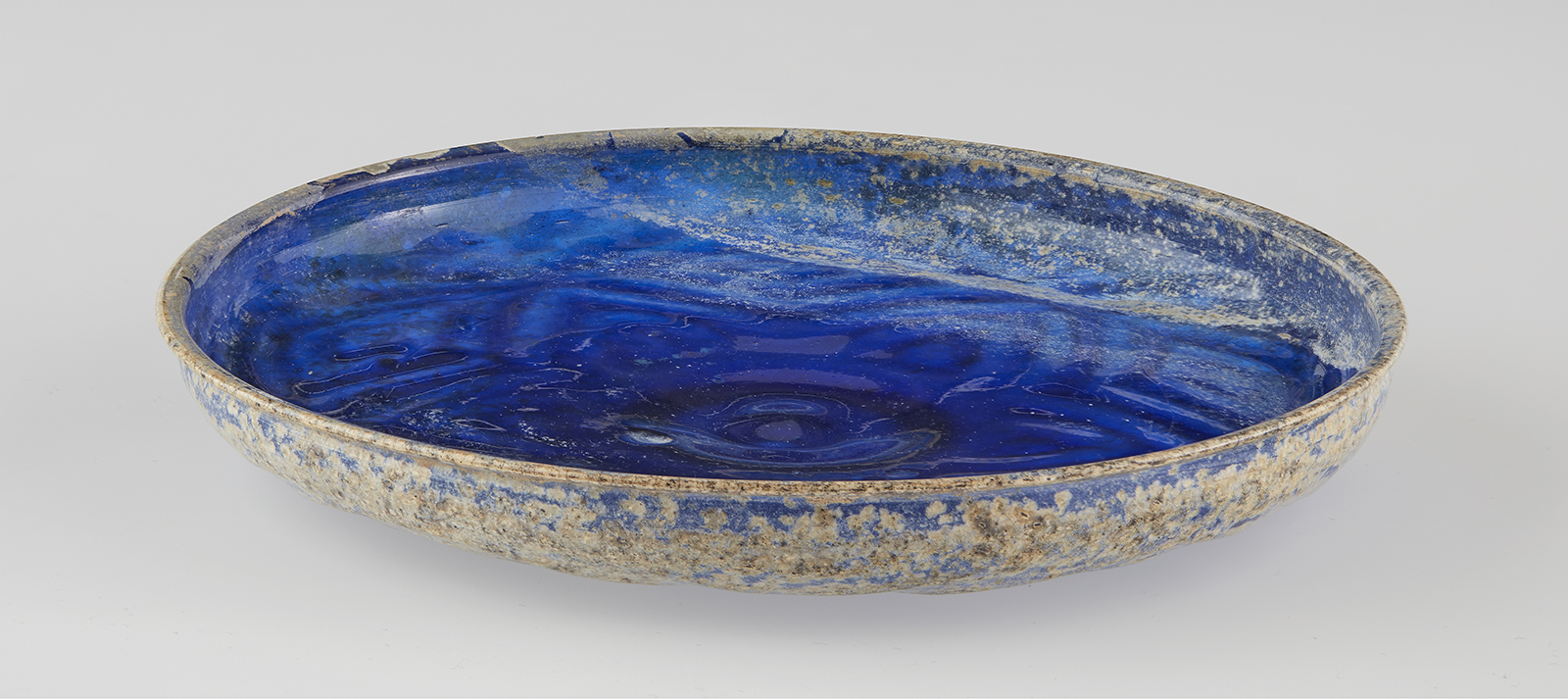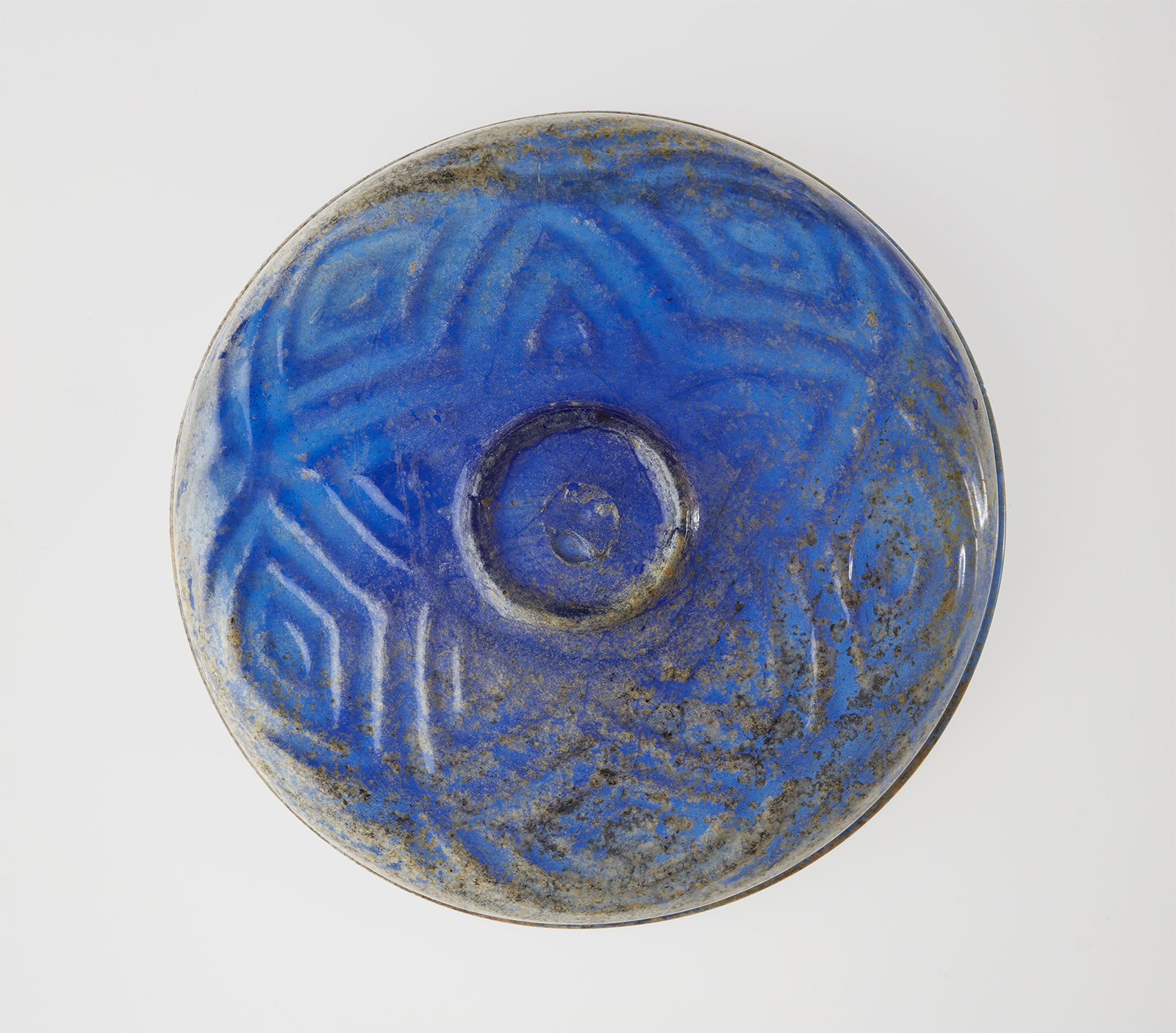Click on the image to zoom
Shallow Dish
- Accession Number:AKM660
- Place:Iran or Afghanistan
- Dimensions:20.6 cm
- Date:10th to 12th Century
- Materials and Technique:glass, deep blue, thin brownish weathering; mould-blown, tooled, worked on the pontil
This dish has a shallow wall with a narrow everted rim and stands on a ring-like foot. Its decoration consists of an allover pattern. A five-pointed star with enclosed triangles around the base and the lower part of the wall continues with a row of large lozenges containing smaller lozenges. The pattern can be seen when viewed from the exterior as well as on the interior if seen against light. This decoration was produced by blowing the glass into a dip mould; taken out of the mould it was further blown and tooled with great accuracy. A large pontil mark (from a hot metal rod with some glass attached to it) in the exterior center of the foot remains from shaping and tooling the dish.
Further Reading
It is unique that this dish and the preceding bowl (AKM659) survived the ravages of time. It may have been possible that they have been buried, perhaps because they were stored within a ceramic vessel for safeguard as is known to have happened with ceramics and metalwork found together by excavators. Highly treasured works of art were saved before invasions and wars took place. Since there is no definite evidence for a provenance, one must wait until archaeological finds or other circumstances reveal more precise information.
Shallow dishes of small or medium size were produced in great numbers since the early years of glassmaking in Islamic lands. They sometimes had large rims and could be plain or with painted or wheel-cut decoration. A footring such as the one of this dish in the Aga Khan Museum Collection was rarely used. It seems probable that dishes with mould-blown decoration became more common after the 10th century than before. During the 11th to 13th century, dishes, bowls and different kinds of vessels with related allover patterns of lozenges or rhomboids related seem to have been especially popular in the eastern Iranian regions.
Specimens of differently shaped and patterned dishes are in diverse glass collections, including the Al-Sabah Collection in Kuwait .[1] Many of these bowl types are the last surviving examples of an age of great creativity in glass production in Islamic lands. Due to the invasion of the Mongols of cities like Baghdad in 1258 and the later invasions by Timur in Iran in 1383, the glass industries of the Near East eventually closed down, having lost their artisans, their resources, and their customers. It is against this background of gradual destruction that one may appreciate this dish and the other glass vessels in the Aga Khan Museum Collection. Products of the 9th to 13th centuries, they were created during a time when the industry was at its height.
— Jens Kröger
Notes
[1] Carboni, 208, no. 51a; 220, no. 57a-b; 256, no. 346. Bass et al.; 83-103 (shallow dishes), 183-187 (unusual bowls). Goldstein, 116-121 no.140-144. Whitehouse, 102-103 no.782.
Reference
Bass, George F. et al. Serçe Limanı, Volume II: The Glass of an Eleventh-Century Shipwreck, College Station: Texas A&M University Press, 2009. ISBN: 9781299053748
Carboni, Stefano, Glass from Islamic Lands. The Al-Sabah Collection, Kuwait National Museum. New York: Thames and Hudson, 2001. ISBN: 9780500976067
Goldstein, Sidney. Glass From Sasanian Antecedents to European Imitations, Nasser D. Khalili Collection of Islamic Art XV. London: The Nour Foundation in Association with Azimuth Editions, 2005. ISBN: 9781874780502
Whitehouse, David, Islamic Glass in The Corning Museum of Glass, Vol. II, Corning, NY: The Corning Museum of Glass, 2014. ISBN: 9780872901995
Note: This online resource is reviewed and updated on an ongoing basis. We are committed to improving this information and will revise and update knowledge about this object as it becomes available.






